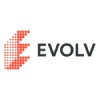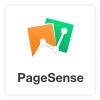The 20 Best A/B Testing Tools on the Market
Following is a collection of a/b testing tools and platforms - listed in alphabetical order. Most of them are web-based, but some of them work only on mobile devices. Some allow you to test an idea using A/B testing, while others take the final step and make the optimization part of their workflow.

Build end-to-end experiences that drive growth across all digital channels. Marketing, product and engineering teams work together to deliver seamless user experiences with AB Tasty.
Visit website➔
With Adobe Target, you get AI-powered user experience testing, personalization and automation at scale, so you can find that one customer out of a million, and give them what they want.
Visit website➔
Apptimize empowers product teams to efficiently run A/B tests, rollout and manage new features, and deliver personalized user experiences.
Visit website➔
Convert.com’s A/B testing tool has split testing, personalization, advanced goals, fast support, and monthly payments.
Visit website➔
AB Test your ideas with our smart A/B testing software. Focus on what you love while our Autopilot maximises your conversions.
Visit website➔
Personalize, optimize, and act on your data using the tools already in your stack, including data management platforms, eCommerce enterprise systems, email marketing services, web analytics solutions, and more.
Visit website➔
Use AI to automatically discover, personalize, and serve progressively better journeys by continuously adapting to live user behavior.
Visit website➔
Intellimize is a startup offering tools for marketers to drive conversions by personalizing websites.
Visit website➔
Kameleoon is the only optimization solution with web, full stack, and feature experimentation capabilities in a single unified platform.
Visit website➔
Monetate offers retail companies a suite of marketing tools that include AI product suggestions, hyper-personalization, customer data management, and more.
Visit website➔We help data-driven marketers around the world to understand, segment, convert & retain customers.
Visit website➔
Optimizely provides A/B testing and multivariate testing tools, website personalization, and feature toggle capabilities, as well as web content management and digital commerce.
Visit website➔
Oracle Maxymiser Testing and Optimization provides advanced website testing, real-time behavioral targeting, in-session personalization, and product recommendations across websites and mobile apps.
Visit website➔
SiteSpect is the A/B testing and optimization solution where you can A/B test your ideas, discover insights, and personalize the entire customer journey.
Visit website➔
Unbounce landing pages improve conversion rates & drive business. Start a free trial today. Speed Up Testing & Increase Conversions by 30% with Unbounce Conversion Intelligence™
Visit website➔
VWO is the world's leading web testing and conversion optimization platform that enables growing businesses to optimize their web experience
Visit website➔
Wasabi is open source real-time, enterprise-grade A/B Testing platform, battle-tested in FinTech products, servicing over 120 apps across web, mobile, and desktop.
Visit website➔
Webtrends Optimize is enterprise-grade experimentation platform that supports a suite of optimization and personalization features to enhance the visitor experience.
Visit website➔
Measure your key website metrics, understand your visitors' online behavior, and give them a personalized website experience to boost conversions.
Visit website➔Good to know...
What should I consider when choosing an A/B Testing Tool?
When evaluating an A/B testing tool, it's important to consider the following key features:
- User interface: The tool should be easy to use and should allow you to set up and manage tests with minimal technical skills.
- Customization: The tool should allow you to make customizations to your tests, such as setting up specific conversion goals and defining the duration of the test.
- Data collection and analysis: The tool should collect and analyze data in real-time, so you can quickly see how your test is performing and make changes if needed.
- Integration: The tool should integrate with your existing website or app, so you can easily set up and run tests without having to make any major changes to your code.
- Reporting: The tool should provide detailed reporting, including data visualizations and easy-to-understand metrics, to help you understand the results of your tests.
- Support: The tool should have a dedicated support team that can help you troubleshoot any issues you encounter, and should also offer training and resources to help you get the most out of the tool.
- Scalability: The tool should be able to scale to meet the needs of your growing business, and should offer additional features and integrations as you need them.
- Pricing: The tool should be reasonably priced and offer flexible pricing plans to fit your budget and testing needs.
Ultimately, the best A/B testing tool for you will depend on the specific needs of your business, so be sure to do your research and consider all of these factors before making a decision.
What are the typical cost of an A/B testing tool?
The cost of an A/B testing tool can vary widely depending on the features and complexity of the tool.
For basic A/B testing tools, prices typically start at around $20-$50 per month for a basic package and can go up to several hundred dollars per month for more advanced features and a larger number of monthly visitors.
For enterprise-level A/B testing tools, prices can range from a few thousand dollars per year to tens of thousands of dollars per year, depending on the number of visitors, the number of tests you can run simultaneously, and the level of support and custom features you need.
It's also worth considering that some A/B testing tools offer a free basic version, with limitations, while others offer a free trial period so you can test the tool before committing to a paid plan.
Ultimately, the cost of an A/B testing tool will depend on your specific needs and budget, so it's important to compare different options and carefully evaluate the features and pricing of each one.
How easy is it to set up an A/B test using the tool?
The ease of setting up an A/B test using a tool can vary depending on the specific tool being used. Some A/B testing tools offer a simple, user-friendly interface that allows users to easily create new tests, select variations, and set test parameters such as traffic allocation and test duration. Other tools may require more technical knowledge or coding skills to set up and implement tests.
In general, the ease of setting up an A/B test using a tool will depend on the complexity of the test and the level of customization required. Simple A/B tests with basic variations and parameters can typically be set up quickly and easily using most A/B testing tools, while more complex tests with multiple variations, custom tracking, or complex segmentation may require more time and technical expertise to set up correctly.
When evaluating A/B testing tools, it's important to consider the level of technical expertise required to use the tool effectively, as well as the quality of the user interface and documentation provided by the tool's developers. A user-friendly interface and clear documentation can make it easier to set up and run successful A/B tests, even for users with limited technical experience.
Do A/B tools integrate with other tools?
Many A/B testing tools offer integrations with other analytics tools, such as Google Analytics, Mixpanel, and Optimizely, to name a few. These integrations can provide a more complete picture of the test results, as well as allow users to better understand the impact of the test on user behavior and overall business metrics.
For example, integrating an A/B testing tool with Google Analytics can allow users to track the impact of the test on key performance indicators such as bounce rate, session duration, and conversion rate. Similarly, integrating with Mixpanel can provide insights into user behavior and help identify patterns or trends that may not be immediately apparent from the A/B test results alone.
When evaluating A/B testing tools, it's important to consider the available integrations and how well they fit with your existing analytics stack. Integration with other analytics tools can make it easier to analyze and act on test results, as well as provide a more comprehensive understanding of the impact of the test on overall business metrics.
What is server side versus client-side in A/B testing implementation?
Server-side A/B testing and client-side A/B testing are two different approaches to implementing A/B tests that can be used to test changes to web or mobile applications.
Client-side A/B testing involves delivering different versions of a web or mobile application to users' devices through the browser, using JavaScript or other front-end technologies to dynamically display different content or features to different groups of users. This type of testing typically requires the use of a client-side A/B testing tool, which tracks user behavior and engagement on the website or application in order to determine the impact of the changes being tested.
Server-side A/B testing, on the other hand, involves delivering different versions of a web or mobile application from the server side infrastructure, based on pre-defined rules or algorithms. This type of testing can be used to test changes to the back-end infrastructure, such as changes to server response times or database queries, as well as changes to front-end content or features. Server-side testing typically requires more technical expertise to set up and manage than client-side testing, but can offer greater flexibility and control over the testing environment.
The choice of server-side versus client-side testing will depend on the specific requirements of the test, as well as the resources and infrastructure available to the testing team. Client-side testing can be easier to implement and provide faster results, but may be more vulnerable to issues such as ad-blockers or network latency. Server-side testing can be more complex to set up, but can provide more accurate and reliable results, as well as better control over test variables.
Did you know that there are also advanced AB testing tools that use machine learning algorithms to automatically optimize experiments?
These tools, known as multivariate testing tools, allow businesses to test multiple variations of a webpage or product simultaneously, and the machine learning algorithms analyze the data to identify the most effective combination of elements. This approach can save businesses time and resources by automating the optimization process and providing more accurate insights.
Additionally, some AB testing tools have also begun to incorporate artificial intelligence and natural language processing to analyze user feedback and sentiment. By analyzing user feedback, businesses can gain insights into how their customers perceive their website or product and use this information to make data-driven decisions for future optimizations.
Overall, as technology continues to evolve, we can expect to see even more advanced AB testing tools that incorporate machine learning, AI, and other cutting-edge technologies to help businesses optimize their online performance.